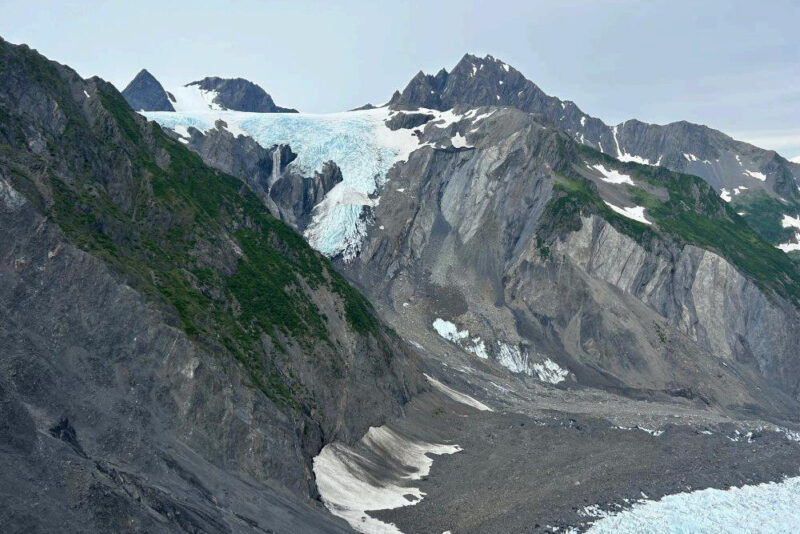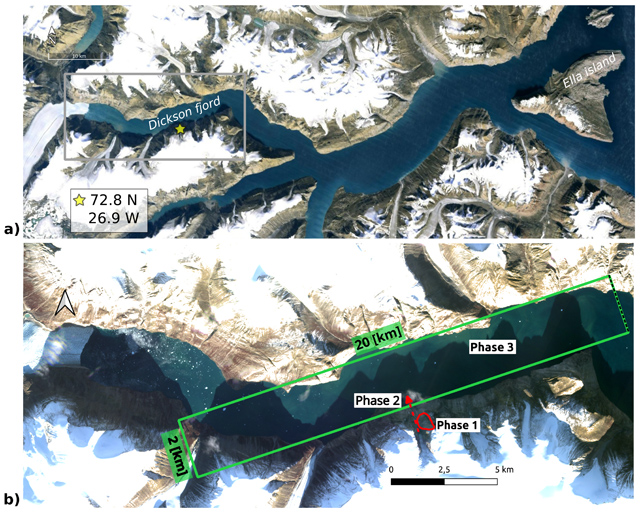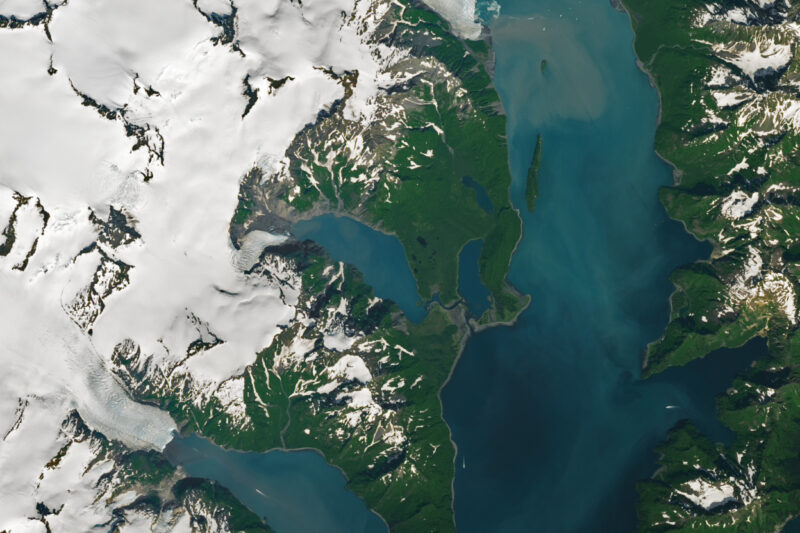
Landslide-triggered tsunamis more common with global warming
Earth is warming at a rapid rate due to human activities that drive greenhouse gases into the atmosphere. And as glaciers and permafrost are melting, these destabilizing forces are driving more landslides. Some of those landslides, in turn, enter bodies of water, displacing them and triggering giant waves known as tsunamis. These landslide-triggered tsunamis are also called megatsunamis. And, because of climate change, they’re becoming more common.
A group of researchers led by Angela Carrillo-Ponce of GFZ German Research Centre for Geoscience in Potsdam, Germany, published a new paper on August 8, 2024. The paper appeared in the peer-reviewed journal The Seismic Record. The authors wrote:
The effects of global warming and changes in permafrost are likely to further reduce slope stability and increase the incidence of landslides and tsunamis. The occurrence and propagation of tsunamis, especially in fjord locations, are considered to be one of the most devastating of all natural disasters.
September 16, 2023, Greenland megatsunami
The authors studied the September 16, 2023, megatsunami that created a unique seismic signal in remote eastern Greenland. The waves from this tsunami were more than 650 feet (200 meters) tall at their highest. And they averaged 200 feet (60 meters) along a 6-mile (10-km) stretch of the fjord. In fact, the megatsunami was so powerful that the waves sloshed back and forth between the shores of Dickson Fjord for a week.
Carrillo-Ponce said:
The fact that the signal of a rockslide-triggered sloshing wave in a remote area of Greenland can be observed worldwide and for over a week is exciting.
Because it was a remote area, the only reported damage was to a military installation on Ella Island, which was closed and unmanned for winter.
Carrillo-Ponce said:
The analysis of the seismic signal can give us some answers regarding the processes involved and may even lead to improved monitoring of similar events in the future.
And the press release added:
The findings will help researchers as they study the impacts of landslides in Greenland and similar regions around the world where global warming and the loss of permafrost are making rocky slopes and glaciers increasingly unstable.

Tsunami in Alaska in August 2024
Retreating glaciers expose rocky cliffs that are vulnerable to landslides. In southern Alaska in August, the addition of heavy rainfall helped trigger a landslide in Kenai Fjords National Park that then generated a tsunami. Some 2 million cubic meters of rocks and debris came rushing down into the Pederson Lagoon, propogating a 56-foot (17-m) tsunami. NASA Earth Observatory reported:
The wave damaged trees and flattened vegetation between the upper and lower portions of the Pedersen Lagoon. According to local reports, it also damaged a lodge’s boardwalk on the eastern side of the lower lagoon.


Risk of tsunamis
The landmass that caused the landslide and tsunami in Alaska is an area scientists had already identified as a potential problem. They had been planning to do fieldwork there before the event occurred. In fact, they just missed out on beforehand observations. National Park Service (NPS) Alaska Regional Geologist Chad Hults told KTUU in Anchorage:
We had a flight for measuring the tidewater glaciers the week prior, but we had a technical issue that kept us from continuing the operation that day, so we weren’t able to capture it before the landslide released.
Hults said the National Park Service and USGS are looking at more areas in Alaska that could have landslide-triggered tsunamis:
There are some unstable slopes that we’ve identified that are above glaciers that are retreating, and they could potentially release and land on the glacier and then flow down the glacier before they hit the water.
People in these regions where the slopes are becoming unstable should take the landscape into account when deciding where to camp or boat. Hults said:
Southern Alaska has very steep slopes that could be potentially unstable, and recognizing that hazard exists is important for your making your decisions.
Bottom line: Landslide-triggered tsunamis due to melting glaciers and permafrost are becoming more common with global warming.
Via Seismological Society of America
Read more: Did Viking 1 land on debris from an ancient megatsunami on Mars?











